Remember when your mailbox was inundated with postcards, mail order catalogs, and flyers advertising sales?
Not too long ago, snail mail was the best way to reach prospective customers or clients, but that’s gradually changing as more people rely on email to get work done, exchange ideas, and communicate with one another quickly.
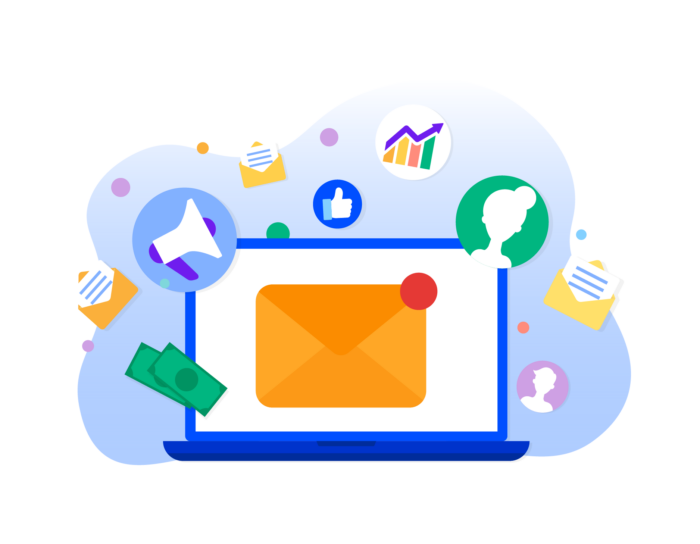
A 2019 study by The Radicati Group found that close to 3.9 billion people worldwide — more than half of the world’s population — use email for personal or business reasons.
If this upward trend continues to grow by 3 percent each year, more than 4.3 billion people will be using email by the end of 2023.
You need an email address to create all kinds of accounts, from social networking sites and software solutions to loyalty programs and online banking services, but it’s clear that email is growing as a popular form of communication.
In fact, The Radicati Group study estimates that the more than 293.6 billion emails exchanged each day in 2019 will grow by 4 percent each year and exceed 347.3 billion by the end of 2023.
For businesses of all sizes, this stable growth in email usage presents an opportunity to reach more people in more places.
Since people receive so many emails each day, they are particular about which ones they read. But there’s a good chance that they’ll take action immediately after seeing a message about a sale, new product, or even the latest blog post from a thought leader.
Quite a bit of strategy goes into creating, building, and maintaining an effective email marketing campaign.
Getting people to read an email that’s marketing your products or services is only half the battle. You’ll want to know how many people opened an email and what they clicked on. You also need to master the art of grabbing their attention within seconds, avoiding their spam filters, and creating customized messages that stand out among competitors. There are even ways to analyze a marketing campaign’s potential success by sending out different versions of an email.
That may sound like a lot to digest, but this step-by-step guide to email marketing will touch on all of these points and more. We’ll explore
- The definition of email marketing
- Why email marketing is important
- The benefits of email marketing
- Creating and executing an email marketing strategy
Crafting an effective email marketing campaign requires time, creativity, and planning, but the gains you earn can be significant over time. Engaging email content can not only motivate people to take action but also turn them into loyal customers, clients, or users.
What is email marketing?
Before venturing too deep into the weeds, let’s define email marketing.
Email marketing involves sending emails to external stakeholders, such as clients, customers, or business partners. These messages typically provide promotional or educational content and encourage people to take some sort of action, whether it’s to buy a product or donate to a cause.

Marketers define email marketing as a digital strategy that uses email to reach people who are existing or potential customers. Email gives marketers the ability to reach people almost anywhere. They can interact with their target audience, promote their business, and, above all, drive sales or web traffic to their company.
As people spend more time online and carry out daily tasks there, it’s becoming increasingly important for businesses to have some sort of digital presence. A user-friendly website and social media account used to be enough, but those are now staples for almost any business. The same can be said of marketing campaigns, which historically consisted of print advertisements and direct mail strategies, such as postcards, brochures, and letters.
Nowadays, businesses should have a visually appealing website that works well on desktops, laptops, and mobile devices. They also need accounts on several social media platforms where they post engaging content. Marketing campaigns should also consist of some digital strategies, including online advertisements and — you guessed it — email marketing.
Why is email marketing important?
Good question. Here are a few answers.
There’s a high likelihood people will see your message
Research has shown that checking emails is becoming a regular routine for many adults in the United States.
A 2018 study by digital marketing company Fluent found that 81 percent of Americans check their personal email at least once a day. Of the 2,667 survey participants who had a work email address, 74 percent of them said they check it a few times each day.

Although there’s no guarantee people will read your email, connecting with them on a platform they use each day is a good idea. And, as surprising as it may seem, there’s also a good chance that people will open your email.
The Fluent study found that 49 percent of people open marketing emails at least sometimes. The remaining 51 percent said they either never or rarely open marketing emails. Almost 50-50 odds is good enough to make creating relevant, engaging, thoughtful, and attention-grabbing content a cornerstone of your digital strategy.
Email marketing is becoming a must-have strategy for businesses
Companies need some sort of email marketing strategy to keep up with the times — and competitors.
An annual report from Salesforce found that 74 percent of senior marketing leaders use email marketing to reach existing and prospective clients. Another 21 percent of the 4,100 marketing leaders surveyed said they would integrate email marketing into their workflows within the next year.
Even though businesses see the value of social media platforms as marketing vehicles, it’s clear that email marketing isn’t going anywhere.
In fact, email marketing even secured a slight lead in the Salesforce study over social advertising and publishing, which is projected to be used by 94 and 91 percent of marketing leaders, respectively, by the end of 2019.
Email marketing provides a high return on investment
On the whole, email is the most cost-effective marketing medium compared to other options, including social media marketing.
A 2018 report from the Data & Marketing Association, a trade organization for marketers, found that companies spent an average of $10.23 on email marketing campaigns to acquire a single paying customer. By comparison, it would take about $21.95 in social media campaigns and $27.35 in direct mail marketing, respectively, to secure a paying customer.
You can send a message to your intended audience in a number of ways. The methods you use should be determined by your budget, the nature of your business, and how people want to hear from you.
Above all, it’s important to select communication channels that your customers use regularly and that will generate a positive response from them, whether it’s to buy a new product or read a new company blog post.
Benefits? Yeah, we got ’em
These are just a few of the benefits that give email marketing an edge over other alternatives, such as social media, direct mail, and search engine marketing (SEM):

- Emails don’t contribute directly to paper waste. That seems like a no-brainer, but you may be surprised to hear how many pieces of direct mail, such as postcards or letters, are processed and delivered each year.
The Print Industries Market Information and Research Organization estimates that 77.9 billion pieces of direct mail — except catalogs — were sent out in 2014, a 16.3 percent drop from 93.1 billion in 2008.
It doesn’t take a statistician to realize that’s a lot of paper, and not all of it is filed away or thrown into recycling bins.
Direct mail suppliers have made strides to reduce their environmental impact, such as adopting sustainable sourcing practices and supporting reforestation efforts, but at the end of the day, there’s no way for marketers to control where all of that paper goes.
People can always print the marketing emails they receive, but they usually do so for a good reason. They may, for instance, want to print out a coupon or details about an offer as a reference during their visit to a store.
Direct mail can sometimes complement your digital marketing efforts, especially if you need to reach large groups of people, but the costs to carry out both strategies can add up and ultimately limit a campaign’s overall effectiveness.
- Email is cheaper than other marketing channels. By and large, there’s very little doubt among marketers that email is the cheapest way to reach out to existing or potential customers.
According to the Data & Marketing Association report from 2018, securing a paying customer through direct mail or social media advertisements is more than twice as expensive as email marketing.
Advertising on search engines and websites or applications will generally cost businesses an average of $21.50 and $19.50, respectively, to secure a paying customer. The Data & Marketing Association report notes that the overall return on investment hovers around 25 percent for search engine marketing and 18 percent for display marketing. Email marketing, meanwhile, generates a 122 percent return on investment for businesses.
- Emails allow you to create targeted appeals for specific audiences. People are gravitating to marketing campaigns that are less generic. With email, marketers can make relevant pitches based on key insights about their target audience, such as where they live or what they’ve bought in the past.
This practice, called market segmentation, can be expensive or difficult to achieve with digital and direct mail marketing, which typically relies on a single message to jive with a broad group of people.
You may, for example, want people to buy a new product, but it’s likely that your pitch to existing customers will be different from the one you’d give to people who know little about what your business offers in the first place.
- Emails can be personalized quickly and inexpensively. With a wide range of companies vying for attention from many of the same people, it’s becoming increasingly important for companies to craft marketing messages that align with the behaviors of their intended audience.
Personalization goes beyond market segmentation to take into account individual behaviors and characteristics, as opposed to demographic and other group characteristics. Whereas market segmentation is based on marketers’ needs, personalization is based on consumers’ needs.
Like market segmentation, personalization can be costly with digital or direct mail marketing campaigns. In both cases, you must come up with a meaningful pitch, create design assets for it, put up some money, and wait until ads are published or distributed before determining whether they’re resonating with people.
Email marketing campaigns, on the other hand, are cheaper to carry out. If you want certain groups of people to receive different messages, you can create separate email distribution lists, draw up unique designs for each email, and write content for each one based on the unique needs of your customers, clients, or buyers. You can also autopopulate the recipient’s name in each email.
- Emails are easy to analyze and change quickly based on data. There are a number of ways to gauge how well a specific marketing campaign is performing on a number of communication channels.
If you’re using an email marketing automation platform that can send out emails and analyze who’s interacting with them, you can tell if your emails are getting the results you want.
Before launching the entire campaign, you can run an A/B test by sending out at least two variations of the same email with slight changes to each one, such as different subject lines or design elements. This low-cost testing method allows you to see how your emails resonate with a portion of your overall target audience.
The results, in turn, allow you to refine your email marketing strategy and select which email the rest of your target audience will receive.
In practice, email A/B testing doesn’t require you to spend a lot of money before you can tell whether your email marketing campaign is on the right track. Not so for advertising, whether print or online.
You have to pay to run an ad before determining whether it’s working or not. And though digital marketing provides valuable information about people who interact with an advertisement, changing an ad isn’t easy or quick.
Making edits to a search engine, display, or social media marketing campaign can take time, since ad platforms, such as Google, Facebook, Instagram, and Bing, must vet and approve content before it can go live.
Creating and executing your email marketing strategy
Once you’ve decided to roll out an email marketing campaign, putting together a game plan will help you carry out your ideas effectively and stay on the right path. Your strategy should be comprehensive and cover everything from creating engaging content to mobile-friendly design elements that help your message stand out.
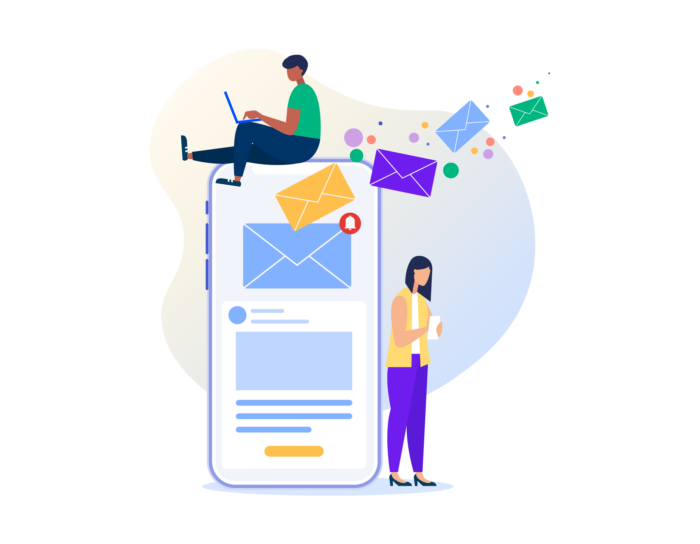
At the same time, your plans should be flexible so you can test which type of emails work best, analyze the results, and use those findings to adjust your approach. This could mean rethinking who your target audience is, reprioritizing content, and modifying how your emails are written or designed to make them more appealing.
Creating an email marketing strategy can be tedious, but it will help you organize your ideas and channel your energy toward targeted goals.
Here are a few things to keep in mind when you’re developing an email marketing campaign:
- Follow best practices when writing emails.
- Craft and send emails that target specific groups of people.
- Get to the point and personalize your message.
- Create customized emails that display well on mobile devices.
- Use email marketing software to save time.
- Conduct A/B tests to see what sticks.

Follow best practices when writing emails
When it comes to email marketing, the devil is in the details.
Even if your emails are visually appealing and look great on any computer or mobile device, it won’t matter if people ignore or discard your message once it lands in their inbox.
Investing effort into your content and following some time-tested methods that actually entice people to open your emails will ensure your message reaches your target audience.
Above all, knowing how to write emails like a marketing pro will help you establish a good rapport with your target audience and motivate them to take action, whether it’s to check out a flash sale, participate in a contest, or try out a new product or feature.
If done right, your emails could turn prospective leads into regular patrons, users, visitors, clients, customers, or even fervent fans.
Here are a few quick and dirty tips on how to write a marketing email that can deliver results:
- Choose wisely when determining whose name — a person, business, or organization — should appear in the “from” line. This may seem like a trivial detail in the grand scheme of things, but it’s actually more important than you might expect.
A 2016 survey of 1,361 U.S. adults by Fluent and email marketing platform Litmus, found that 42 percent of all respondents looked at the sender or “from” name in an email before deciding whether to open it.
This suggests that people look for names they know and trust while filtering through their emails. It’s also no secret that the prevalence of phishing scams and spam emails have led people to be more careful about what they open.
Using a reputable name as the sender of a marketing email reduces the chances that your message will be deleted or end up in someone’s spam folder.
Choosing a name and email address that are familiar to your target audience is an important step in getting their attention. This could mean using the name of your company or a well-known person in your organization that an email recipient will recognize immediately.

You could even lean on your company’s brand recognition or reputation to reach your target audience.

As a general rule, it’s also important for the email address and name in the sender field to match so your target audience won’t mistake your message for spam.
That said, you should try to avoid using a “no-reply” email address for marketing emails. No-reply addresses can be disregarded as spam or overlooked. It also gives people the impression that you don’t want to hear from them. This strategy can backfire when people have support-related questions and need an easy way to contact you. Replying to you directly is easier than searching for contact information buried in the body of your email.
There are always exceptions, though. For instance, you could use a “no-reply” email address or get away with having a sender name and corresponding email address that don’t match if people have signed up for regularly scheduled product updates, newsletters, or promotions from your company.
- Create a catchy email subject line. The subject line of your email is like the headline of an article or blog post. It tells readers why they should care about what you have to say and what they can expect from you. Great subject lines are usually written in active voice and avoid adverbs.
The 2016 survey by Fluent and Litmus found that 34 percent of the 1,361 respondents initially looked at the subject line of an email when deciding whether or not to open it.
That same survey, however, also found that 54 percent of all respondents said they’ve felt cheated, tricked, or deceived into opening an email based on its subject line.
This means the subject line of each email serves as a promise between you and your target audience. It’s important for these people to see your message and take action, but if you mislead them, they may either ignore future emails from you or mark you as spam.
Email subject lines should accurately summarize your intended message so you can establish some credibility off the bat and build on it over time. Making subject lines relevant, pithy, and descriptive will not only make your message easy to read but also allow your target audience to decide whether it may benefit them.
Subject lines carry a lot of power because they can motivate people to take action immediately, even if they don’t actually open an email and read it. As counterintuitive as that may sound, the 2016 Fluent and Litmus survey found that 35 percent of all respondents visited a company’s brick-and-mortar store or website after receiving a marketing email but not opening it.
In a similar fashion, 33 percent of all survey respondents said they bought something from a business after receiving a marketing email but not opening it.
Perhaps there’s some rhyme and reason after all behind those emails that declare “Your pick-up-in-store order is ready for pickup” or “Don’t delay — Save 50 percent today only.”
- Highlight direct benefits for readers to grab their attention quickly. It’s easy to assume people won’t dedicate a lot of time to filter through their emails, but research by Litmus has found that this belief may be more of a misconception.
In fact, Litmus’s analysis of billions of opened emails found that the average time people spent reading emails increased by nearly 7 percent between 2011 and 2016, from 10.4 to 11.1 seconds. This average increased to 13.4 seconds in 2018, when Litmus conducted a follow-up analysis of 10 billion opened emails.
Perhaps more surprising is that the percentage of emails read for more than 18 seconds rose to 44.4 percent in 2016 from 38.4 percent in 2011. By 2018, 61 percent of emails were read for more than 8 seconds.
The most important benefits for readers should appear in the top half of an email, or above the fold, to grab their attention. It may be tempting to cram as much information as possible into that space, but Litmus’s findings suggest that people will read longer emails with relevant, meaningful, and engaging content. That means you should develop momentum at the beginning of your email and keep readers engaged with your content until the very end.
- Use images or graphics to complement your message. There’s a reason for the saying, “a picture is worth a thousand words.” Photos, images, and interactive graphics can make the reading experience more enjoyable and aesthetically pleasing for your target audience.
In some cases, these visual design elements can convey your message to readers without relying too much on text to do the heavy lifting. This can be particularly helpful since marketers have seconds, not minutes, to capture a reader’s attention.
There is, however, a caveat to this strategy: Too many photos, images, or graphics can increase the amount of time that it takes for an email to load.
Delays that last longer than two seconds can convince people to close an email and either ignore or delete your message. Reducing the size of the photos, images, and graphics in your email and conducting tests on multiple devices should ensure that your message loads properly.
- Use bullet points for emails with a lot of text. Since people often read emails quickly, bullet points should highlight the most important information. Bullet points are effective in email because they stand out and can grab a person’s attention immediately.
Even if someone scans through an email, they can still glean enough information to make an informed decision. The key, however, is to keep your bullet points brief and start each one with an action verb.
- For longer emails, break up your content into manageable chunks. Emails with a lot of text can make your target audience feel like they’re reading a college research paper. This can be particularly problematic since it likely takes longer for people to order and pay for a cup of coffee than read an email.
If you’ve already trimmed down the amount of text in an email, try dividing the remaining text into sections with subheads, bullet points, images, or video files. This strategy will make your message more engaging, easier to read, and less daunting.
Determine whether infographics, instructional videos, or other visual aids can replace some of your written content. Using these elements will allow you to get your point across without bogging readers down with blocks of text.
- Include clear, direct, and succinct calls to action. A call to action, often abbreviated as CTA, is a prompt that asks your target audience to do something specific.
Although it’s typically placed at the end of an email, a CTA can also appear at the end of each section in an email. This strategy is particularly important when you’re introducing several topics and asking your target audience to carry out different actions for each one.
As an example, a newsletter with sections about a flash sale, an ongoing contest, and a new product will likely have a CTA in each one, asking readers to see what’s on sale, participate in the contest, and check out the new product.
In many cases, a CTA is a command button or hyperlink in a sentence that encourages readers to do something, whether it’s to read a blog post, watch a video, or upgrade their account.
A CTA within a command button should contain only a few words, be written in active voice, and clearly explain what you want people to do. Sentences with a CTA, meanwhile, should highlight the value, timeliness, usefulness, or importance of the desired action.


Craft and send emails that target specific groups of people
There was a time when businesses could get away with crafting generic messages to successfully reach a broad range of people. These days, traditional one-size-fits-all emails will likely end up in someone’s spam folder, and you may lose these current or potential customers altogether.
You can cut through the white noise and make your message stand out by dividing your email subscribers into smaller groups based on a wide variety of factors, such as geographic location, income, job title, and previous purchases or interactions with your business.
Once you do that, you can craft messages that cater to a group’s specific needs, wants, or interests. This process, called email segmentation, allows you to share relevant information with all of your email subscribers and outline benefits that they can actually use.
A 2017 analysis by Mailchimp found that campaigns were more effective when businesses separated email subscribers into smaller segments and developed unique messages for each group. The in-house analysis covered 2,000 Mailchimp users who used the platform’s email segmentation tools and collectively sent about 11,000 campaigns to almost 9 million people.
The results of these campaigns were markedly different than ones carried out by Mailchimp users who didn’t employ email segmentation.
The analysis looked at key metrics that gauge the success of campaigns, including total open rates, which track the total number of times an email was opened or reopened, and click rates, which measure how often at least one link in an email was clicked.
Mailchimp found that total open and click rates for segmented campaigns were 14.31 and 100.95 percent higher than those that were unsegmented, respectively. Unique open rates, which track how many individual recipients opened an email, were 10.64 percent higher for segmented campaigns than those that were unsegmented.
Unsubscribe rates, which monitor how often people removed themselves from an email subscription list, were 9.37 percent lower for segmented campaigns, compared to unsegmented ones.
Get to the point and personalize your message
People get dozens of emails each day, so it’s no wonder they quickly scan through a message and discard it in a matter of seconds. The same can be said for traditional, direct mail alternatives, which were long seen as the best way to connect with people on a personal level.
As more businesses turn to email as a cheaper and arguably more effective marketing tactic, software solutions are developing ways to personalize messages intended for different groups of people.
A 2018 Salesforce report found that 72 percent of consumers and business buyers worldwide expect vendors to personalize engagement efforts to their unique needs. Of the 6,723 people who participated in the double-blind survey, 84 percent said the key to winning them over is to treat them like a person, not a number.
The bottom line is that email personalization is now an essential marketing strategy. Here are a few general tips on writing emails that speak directly to your target audience:
- Craft content around your target audience’s behaviors and interests. This is generally a good practice since it’s now possible to track how customers — or prospective ones — interact with a business online and in person.
For instance, you can use loyalty programs to track a customer’s purchases, as well as how and when they take advantage of certain services or products. You can then use this data to determine what kind of promotions, notifications, offers, or other content certain people will receive.
As this level of email personalization becomes more common, people increasingly expect businesses to direct relevant information, products, services, and offers their way based on what they want or need.
The Salesforce report found that 70 percent of survey respondents felt it was important for businesses to understand how they use products and services. Another key factor for 59 percent of survey respondents was seeing engagement efforts tailored around their past interactions with a business.
Targeted email marketing campaigns that leverage data about existing or prospective customers will not only provide them with engaging, helpful, and relevant information but also allow you to become a reliable resource.
- Include the names of people in your marketing emails. Addressing people by name is a time-tested strategy that can forge or reinforce a personal connection between a business and its customers. In some cases, it gives readers the impression that your email was written just for them.
This strategy, however, depends on the relationship you’d like to have with your target audience and vice versa. There are also instances when your target audience may not expect this level of personalization. An email promoting a flash sale may not need to address someone by name since the message is broadly intended for all loyalty program members.
You can test whether this method works for your business by sending out separate emails — one with a person’s name and one without it — to a small portion of your target audience and see if it has a measurable impact on open and click rates.
- Consider including a P.S. at the end of your email. This traditional writing practice, formally known as a postscript, has been around longer than emails, but it can still be useful when you want your message to include a personal touch.
Since it essentially serves as a final appeal to your target audience, a P.S. can underscore why customers should take action immediately, provide an enticing offer that could push them to take action, pitch a final important key benefit, or showcase a customer success story that demonstrates value.
If you use a P.S. in an email, it should be quick and snappy, no more than a few sentences.
- Mobile-aware design. This particular approach employs best practices to ensure that email loads and displays well across a wide range of screen sizes, especially those on smartphones.
- Building narrow emails by stacking content and design assets on top of each other to create a single column. Two-column sections can also be built into the layout to break up the content, highlight products, or drive viewers to a website for more information.
- Using large text, images, and buttons that will look nice on a smartphone.
- Spreading out the amount of space between links and buttons so it’s easy to click on them.
- Responsive design. Responsive design allows the layout of an email to change based on the device, orientation, and platform used to view it. This is done by rearranging an email’s design elements based on the screen size of the device the viewer is using.
This type of approach, however, is a little more complex because it requires some knowledge of CSS, a coding language used to define the layout of an email, including the font size, font color, image size, page orientation, and order of sections.
In the case of emails with responsive design, a CSS technique, called media queries, detects the screen size of a device and makes the appropriate style or layout changes based on preset conditions and size limits for specific elements.
The problem is that these emails generally require some planning and testing to ensure everything looks nice on mobile devices and computers.
- Hybrid design. Hybrid email coding, also known as spongy coding, is very similar to the responsive design approach and was championed at a time when some email clients, such as Yahoo! Mail and Gmail, didn’t support media queries.
Rather than enabling different styles when screen sizes reach a specific threshold, hybrid design elements are set and adjusted based on changes to the area around them. Emails, in turn, are restricted to a maximum width so elements don’t appear too large on desktops and laptops.
Although hybrid email coding will allow you to send messages that display and work well in any email client, it’s also time-consuming when you want to design a complex email layout that covers more than two columns.
- Set clear objectives, and make predictions to get started. Like any scientific experiment that you conducted in high school or college, it’s important to create a hypothesis and determine which metrics matter the most before running your test. This allows you to establish clear expectations and compare them against the results of your A/B test. More important, these basic steps help you set up the test correctly to produce the best results.
There is, however, a key caveat that you should take to heart. It’s best to have an open mind and not make any assumptions about your target audience before conducting an A/B test. That’s because preconceived notions may make it easier for you to overlook valuable yet counterintuitive insights that arise from your experiment.
- Identify who should participate in the A/B test. Limit your test to a small portion of your overall target audience so you can get the most statistically accurate results. Although the size of this group should be small, it should also be large enough to divide in half so you can test the two versions of your email — version A and version B.
As an example, an A/B test aimed at 30 percent of your overall target audience should be divided in half, so 15 percent will receive version A, and the remaining 15 percent will receive version B.
You should choose a test group based on strategic factors, such as geographic location, industry, level of interest in your business, or type of customer. Regardless of which or how many factors you consider, they should be consistent throughout your test because any changes may generate inaccurate data and make it difficult to draw definitive conclusions.
- Control key variables when running your tests. While setting up your experiment, ensure there’s an equal chance that anyone in your test group will receive either Version A or Version B. Randomizing which people receive Versions A or B will generally decrease the likelihood that unrelated variables will taint your results.
In many cases, you should isolate a single element that you want to test in the two emails, such as an image, content, a call to action, a design element, or the subject line. Doing this will help you tie test results to specific changes in an email. Although a test with changes to multiple elements can work, it will be more difficult to determine which one will have the most significant impact.
Since emails display differently on desktops and mobile devices, there’s a chance that this may affect your test results, especially open and click-through rates. For example, when your emails look good on desktops but not mobile devices, key metrics may be skewed if a disproportionate number of people receive Version A or Version B and try to read it on their mobile devices. Creating emails that display well on both mobile devices and desktops should ensure key metrics, such as open and click-through rates, aren’t impacted by the devices people use to access your emails.
- Set up a reasonable time line for your test. When it comes down to it, the duration of your test should be just right to generate results that are as accurate as possible.
If you run a test that’s either too short or too long, you may either base important decisions on incomplete data or encounter issues that could undermine the integrity of your data.
While experiments on web pages can last for days, weeks, or months, it generally takes no more than two days to complete an email A/B test and declare a winner, especially if there are only two variants — a control and challenger — to test.
The duration of your test, however, will vary based on several key factors, including the size of your email list, the percentage of email subscribers included in your test, your desired conversion rate, and your current conversion rate.
To save you some time, several software solutions offer free online tools that can help you determine the length of your email A/B test, including
Some benchmarks that determine the length of your test are subjective and will likely align with the goals that your team — or company as a whole — wants to achieve. You should work with your team and key stakeholders in your company to establish clear goals and expectations before setting up an A/B test.
- Don’t stop a test just because the results are statistically significant. Although software tools can determine how long a test should run, the decision to pull the plug ultimately rests in your hands.
But when should you stop an A/B test? Is it when you see the statistical significance level in your A/B testing tool inching closer to 100 percent?
Statistical significance is achieved when there’s high confidence that the patterns observed in your A/B test aren’t happening by chance. Statistical significance is an important metric to monitor when you’re running your experiment, but it shouldn’t be the deciding factor in stopping your A/B test.
As a general rule, the chance of having incorrect findings should be no higher than 5 percent — this means there should be at least a 95-percent chance that your findings are correct.
The size of your test group also needs to be large enough for your results to be statistically significant. There are free sample size calculators that can help you determine the size of your email A/B test group, including
But if you stop a test just because your results have reached a statistically significant point, there’s a chance that your analysis may be based on incomplete data. This could, in effect, lead you to draw inaccurate conclusions and formulate faulty recommendations.
The key here is stopping your test once your email variations have been sent out to your entire test group, especially if you’re sending out your emails in phases over a period of hours or days.
- Don’t make changes in the middle of your test. After spending the time and effort to set up an email A/B test, it’s important to take a hands-off approach and let the experiment run its course.
Changing anything, including the test settings and the design of any of the emails, will erode the integrity of your test, pollute your data, and perhaps lead to outcome bias.
Even reallocating the number of people who receive each variation during your email A/B test will skew your results and produce results that are inconclusive at best.
Create customized emails that display well on mobile devices
There was a time in the not-so-distant past when people could only check their emails on their desktops or laptops.
But with smartphones and tablets, you can now check your emails almost anywhere. As a result, these mobile devices have gradually reshaped the way people access, view, and respond to their emails.
A Litmus analysis of 10 billion opened emails from 2018 to 2019 found that 42 percent of emails were opened on mobile devices.
Since most people access and read emails on mobile devices, marketers must adapt by ensuring their messages can be viewed on any computer, smartphone, or tablet.
If mobile-friendly emails aren’t incorporated into an email marketing strategy, a business’s messages may fall on deaf ears.
A 2016 survey by Litmus and Fluent found that 43 percent of the 1,107 U.S. adults who responded said they marked promotional emails as spam because they didn’t display or work well on their smartphones.
Of the 1,212 people who responded to another survey question, 51 percent said they unsubscribed from a brand’s promotional emails because the emails or website didn’t display well on their smartphone.
To that end, there are several different design approaches that marketers can take to create mobile-friendly emails:
More specifically, mobile-aware emails typically adhere to at least three key principles:
Use email marketing software to save time
Trying to do email marketing all on your own can be tedious and exhaust your resources.
Investing in email marketing automation tools will cut the amount of time you need to carry out campaigns that can help you raise money, drive sales, convert prospects into customers, convince people to take action, and build awareness around your products and services.
Email marketing automation services, including Constant Contact, Mailchimp, and HubSpot, can be particularly helpful if you plan to roll out more than just a few campaigns or send segmented ones with a series of emails.
Email marketing automation tools can streamline the process by helping you build an email list, manage it, and segment users. Once you create the designs for each email, write the content, and determine when you want to send the emails, these platforms can send targeted messages at specific times or when people conduct certain actions.
The best part is that many email marketing automation platforms have reporting tools that provide key insights, such as open and click rates, so you can gauge whether or not your campaign is working as it should. This data can also empower you to make informed decisions and strategic changes to your campaign quickly.
With email marketing platforms, you no longer need to send individual marketing emails, keep track of when specific people should receive follow-up messages, and measure the overall progress of your campaign manually.
Data-collection tools like Jotform can supplement these efforts by providing email marketing platforms with the information needed to build or kick off a campaign, such as names, email addresses, interests, and preferences.
Native integrations, or connections through third-party integration tools, allow information to flow seamlessly from a data-collection tool to an email marketing automation platform. This process creates a frictionless workflow so you don’t need to manually copy information from one place and paste it into another.
Conduct A/B tests to see what sticks
Your email marketing platform should allow you to see which messages resonate with your target audience. This is especially helpful when you can’t seem to pick a clear winner from your options.
You may, for instance, want to promote two great products but can’t decide which one should take precedence in the subject line and body of your email.
Or let’s say you’re planning to run a flash sale during an upcoming holiday, offering two particular promotions that should appeal to your customers — 50 percent off of everything in-store and a $10 credit for every $25 spent.
Which promotion should appear at the top of an email that’s going out to everyone who signed up for exclusive deals from your business? It’s a tough decision that could impact how many people read your email, visit your website, go to your store, and ultimately buy something.
In this case, A/B testing should make your decision a little easier, since you can send two versions of a message to a small sample of your target audience. Although the content and design elements should be similar, each email should prioritize different promotions in the subject line and body of the message.
For a little more context, let’s say you select 20 percent of your overall audience to receive emails as part of the A/B test. Half of those people, or 10 percent of your overall audience, will receive an email called Version A, which highlights the 50-percent discount. The remaining people, the other 10 percent of your overall audience, will receive a different email called Version B, which promotes the $10 credit for every $25 spent.
With the help of email marketing automation platforms, you can then analyze key metrics, including open, click, and bounce rates, that will help you determine whether people are opening your emails, taking the time to read them, clicking on hyperlinks, and spending time on your website.
Email A/B testing does take some time, but it helps you to nail down a message that can really resonate with people and prompt them to take action. At the end of the day, the strategic changes that you make to your email marketing campaign can drive sales, signups, website visits, web page views, and brand awareness.
Just to be clear, here’s a breakdown of the A/B methodology:
Version A: This is the unaltered, or original, version of your email without any changes. This email, sent to your control group, will serve as an established standard and be compared against a new version of your email that has all the changes you’d like to make.
Version B: This email includes all the changes that you have in mind. Your A/B test will compare interactions with this email — sent to your experimental group — to similar interactions with your original, unaltered email.
Use these tips to ensure that your results are as accurate as possible:
Conclusion
Email marketing can seem like a daunting, time-consuming, and frustrating task, and let’s be honest, sometimes it is. But if you put some effort into it, and you’re willing to learn by trial and error, the seeds you sow today will allow you to reap benefits over time. That ultimately translates to gaining more customers, users, clients, sales, and subscriptions without making a huge dent in your marketing budget.

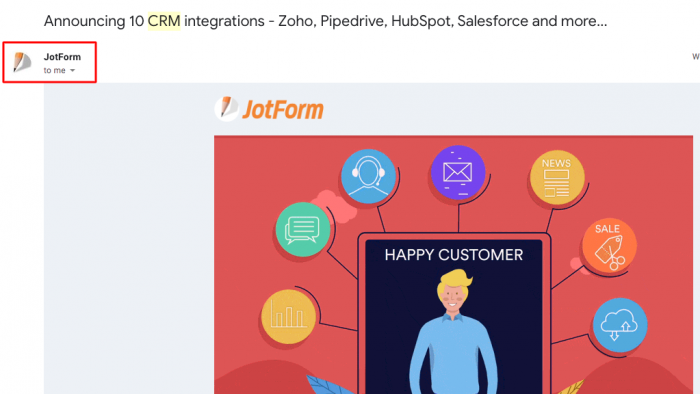
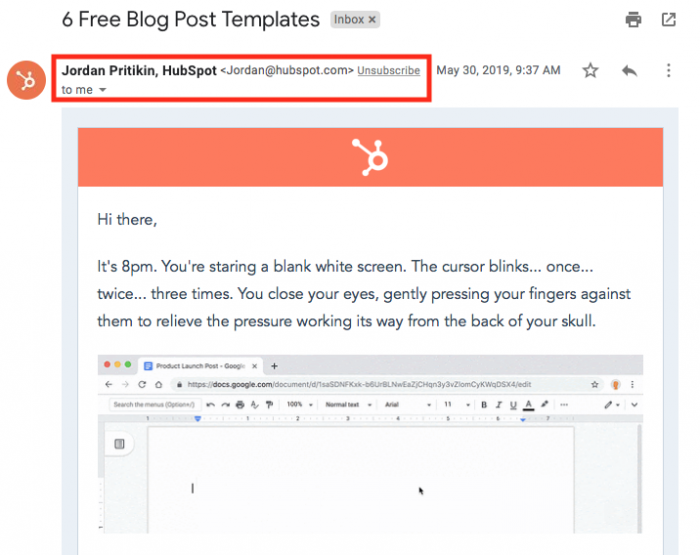
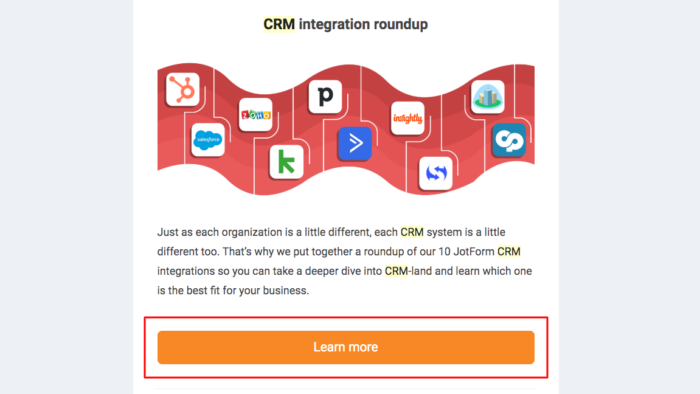
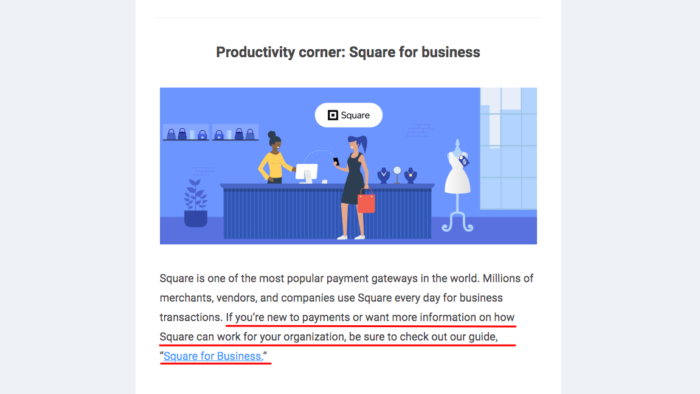



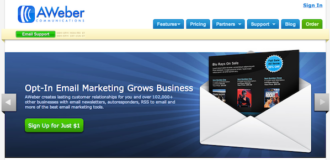



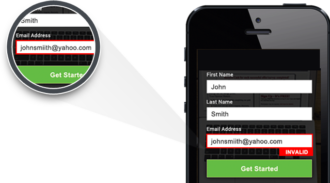


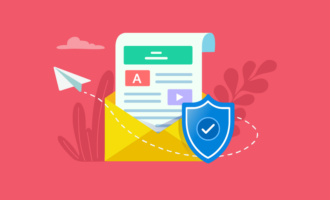








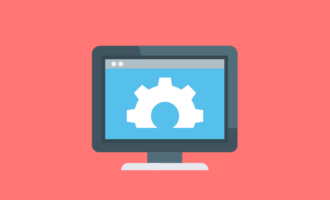
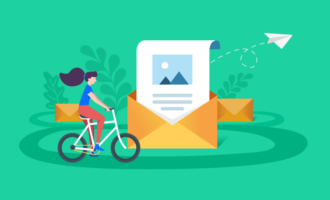







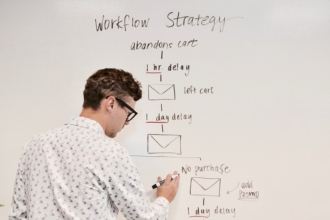

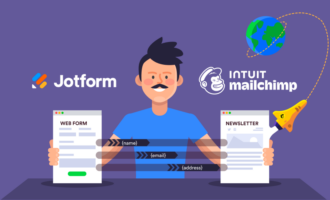





Send Comment:
3 Comments:
More than a year ago
Very nice blogs!!! I have learned a lot of information about these sites, Sharing for wonderful information. receiver option Thanks for sharing this valuable information.
More than a year ago
Thanks for this information; helps me make a tough decision or two!
More than a year ago
I have started my business as a blog about healthy life, I was writing tips and tricks, motivational stories, etc. After I started getting solid numbers of traffic, I have started doing partnerships and selling sports equipment on my website.
I was recently looking for ways to reach out to a larger sized customer profile. I knew that using newsletters are a big way to create attention, educate and finally get the readers to make purchases. I was good at blogging but I knew little about the general concept of email marketing. This guide provided me all the beginning points of a strong email campaign!
I have now a short and sweet newsletter going out to my subscribers on a monthly basis. I have even started seeing some conversion!
Email marketing is definitely not dead and not going away anytime soon!